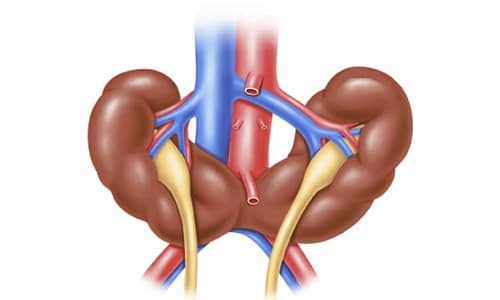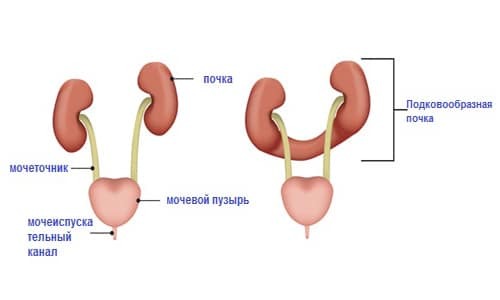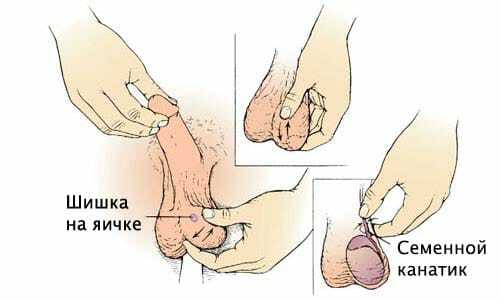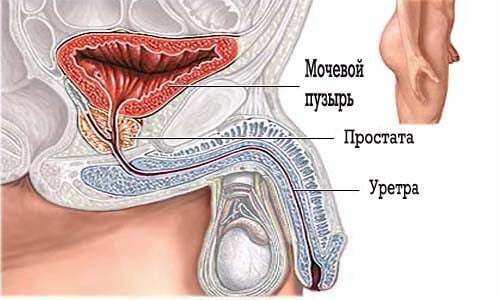Many renal anomalies are known to medical science. Approximately a tenth of their total number is represented in the form of a renal fusion, when two organs are combined into one, resembling a horseshoe in shape. A similar anomaly was appropriately called a horseshoe-shaped kidney.

General information
An abnormal kidney is considered by specialists as an interesting phenomenon. The onset of the pathological process is still at the time of conception and the beginning of pregnancy. Usually such an anomaly is observed when parents do not plan to have a child, so they do not undergo preliminary examinations. In addition, not the least importance is the presence of at least one of the parents of addictions.
About the functions of the kidneys know everything. That this body is engaged in the purification of blood from bacteria, salts, toxins and other substances that interfere with the normal functioning of our body. If the kidneys are subjected to abnormal changes, such as a horseshoe-shaped kidney, then it becomes more difficult for them to cope with their duties. An anomaly is formed due to the fusion of the two organs with their lower bases. When fused, they resemble the letter U or the horseshoe, turned upside down.
This pathology is characterized by a lower localization than in a healthy organ. In addition, the abnormal kidney is characterized by an unusual cup structure: the lower group is underdeveloped, and the upper one is normally functioning. In addition, the horseshoe kidney is characterized by abnormal blood supply. It does not feed one artery, as it should be, but several. Each kidney has its own system of vessels feeding it and its ureter, which flows into the bladder cavity.
It often happens that the abnormal kidney does not bother the patient in any way, and he does not even suspect anything about it. But experts advise to be more attentive to the state of their health, since such a kidney is easily traumatized. In addition, the abnormal kidney is characterized by a special predisposition to pathological processes of a urological nature. Although most patients who have a similar diagnosis, in general, felt completely healthy people.
Causes of pathological development of
Horseshoe anomaly of the kidney is most often formed due to embryonic development disorders. A similar pathology is typical for every 500th child, and in boys the horseshoe-shaped kidney is fixed twice as often as in girls.
The process of renal formation is carried out in three stages:
- Preference formation or pro-nephros;
- Formation of primary kidney or mesonephros;
- Secondary kidney formation.
It is at the last stage that the kidneys should move to the area of their future lumbar localization. But the final formation and fixation of the kidney occurs after the child's birth.
Important. While the fetus is in the womb, the mother's kidneys are cleaning up his blood, which is why it is extremely difficult to detect any abnormalities in development before the baby's birth.
Specialists call a variety of causal factors contributing to the appearance of an anomaly of internal organs. This can happen due to a violation of the processes of moving the kidney or its rotated location. Such deviations most often occur against the background of chemical or medicinal effects on the fetus, if the mother has an infection or some other disease. As practice shows, in most children with an abnormal kidney there are other abnormalities or complications such as:
- Cancer pathologies or kidney polycystosis;
- Skeletal abnormalities;
- Wilms tumors are an embryonic renal tumor, which is characterized by the formation of an intrauterine development in
- ;
- Pathological abnormalities in the activity of the cardiovascular system;
- Problems with the gastrointestinal system;
- Hydrocephalus or vertebral cleavage;
- Hydronephrosis or pulmonary expansion;
- Kidney Stone Formation, etc.
Only after the birth of the child the final formation of the kidneys takes place, they occupy the proper location and are attached to the renal ligament. In general, the horseshoe-shaped kidney is most often formed under the influence of:
- Parasitic pathologies;
- Infectious or somatic diseases;
- Aggressive chemical effects on any production;
- Uncontrolled use of medicines, especially steroid origin.
To avoid abnormal fetal pathologies, it is advisable to consult with a specialist about any drug that you are considering taking.
How the horseshoe-shaped kidney
appears The clinical picture and manifestations will depend on the anomalies accompanying the horseshoe-like fusion. In some children, such a pathological condition can develop for a long period of time and in this case does not manifest itself. In other patients, the formed isthmus causes disturbances in the functioning of several systems:

- The upper ureteral region is squeezed, which subsequently causes the development of pathological conditions such as:
- Stone formation;
- Hypertensive intracellular disease( a similar complication can be manifested by the presence in the urine of bloody impregnations);
- Pyelonephritis;
- Hydronephrosis( abnormal expansion of the renal and pelvic system due to disorders of the urinary tract);
- Tumor cell transformation or neoplasms of cancer origin;
- Horseshoe kidney can influence blood flow, which subsequently manifests as ascites( accumulation of fluid in the retroperitoneal space), varicose veins of the lower limbs and low-tidal organs, hypertension of the legs, menstrual failure, the threat of labor before the term in pregnant women, bleeding in the urine;
- Disturbances of blood circulation and innervation contribute to the onset of pain symptoms localized in the lumbar region and the center of the abdomen. Appears pain syndrome usually after physical exertion. In addition to pain in patients with a horseshoe-shaped renal anomaly, there may be disorders of intestinal peristalsis, constipation, emotional weakness, hysteria, neurasthenic conditions.
The presence of such a symptom is completely unnecessary, as in most patients the horseshoe-shaped kidney does not manifest itself and is found out by chance, when examined for other diseases.
Methods for diagnosing the horseshoe anomaly
Diagnostic tests are based on several procedures:
- kidney ultrasound;
- Intravenous pyelography - a contrast solution is injected into the veins, and then visualization of the genitourinary structures takes place under the influence of X-rays;
- Cystourethrography - examination of the genito-urinary tract with X-ray X-rays;
- MRI or CT;Analyzes of urine, blood and many others.etc.
Based on the obtained data of nephroscintigraphy, urography, echography and aortography, the specialist determines the exact location, limitation of mobility and isthmus. A retrograde pyelogram examination allows to see the low localization of the renal pelvis and the abnormal location of the cup system.
Modern innovative technologies and diagnostic methods provide an opportunity to establish an accurate clinical picture of the anomaly. And with the help of angiographic examination, the condition of the vascular system is revealed, a similar procedure often becomes the determining factor for conducting an operative intervention.
As often happens, in the absence of any manifestations on the part of the horseshoe-shaped renal anomaly, there is no need for treatment. But if pathology is complicated by any additional abnormal processes, then they resort to diagnosis and treatment.
Treatment Methods
If the patient does not have complaints, he is simply under uro-nephrological supervision, during which the doctor prescribes various preventive measures and diagnostic studies of the horseshoe-shaped organ. If a deterioration in the patient's condition is indicated, then pathogenetic or maintenance therapy is prescribed. If the patient's condition worsens due to stone formation, hydronephrosis transformation or kidney tumors, then they resort to operational practice.
Warning! Congenital renal anomalies such as horseshoe fusion have a strong impact on the quality of human life, so you should get rid of bad habits until they lead to similar consequences. Especially it concerns the future mummies.
If there are urodynamic disorders, then a dissection of the formed isthmus with further fixation of the kidney in a new location is shown. The concrements formed in the abnormal kidney are eliminated by lithotripsy, nephrolithotomy, pyelolithotomy, etc. If there is a lesion of any half of the kidney, accompanied by dysfunction of this part of the organ, then its removal or hemiranectomy is indicated.
By means of such techniques, the specialists will relieve the patient of congenital anomalies qualitatively and without consequences. They are conducted with the help of the latest computer technology at the highest level, therefore any post-operative undesirable consequences are practically excluded. The prognosis for uncomplicated horseshoe-shaped renal anomalies is always favorable.



